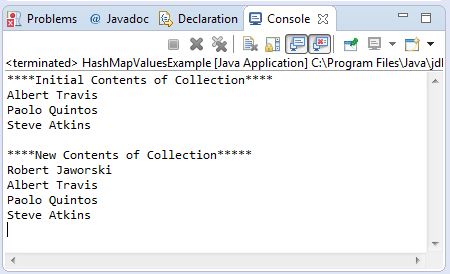

For Example, We will create one HashMap with global scope to transfer data between view. Key: 7 Value: Plum Retrieve a Specific Value To transfer information between two layers of MVC design pattern.
#Java hashmap example code
getValue()) Īdding the method above to your code will print the following output in your console: Key: 1 Value: Orange I have a map where the values are strings and the keys are lists: Map< String, List< BoMLine> > materials I'd like to filter this map by its values something like this: materials.entrySe. view all items with an iteratorįor ( HashMap. This method employs the Map interface that the HashMap class implements. If you want to retrieve all the data individually, then you can use the for method that allows you to traverse through the HashMap and print each value and its corresponding key. This is a feature that puts HashMaps ahead of other data structures such as the Array data structure that only support linear storage. Java hashmap a complete tutorial for beginners with examples, methods and functions, explanation of each class from java key value pair to put method. Check out the complete definition, examples part for each class method, map interface java, and creation of java hasmap from java key value pair put.
HashMapIt is made up of two main components: a hash function and an. Java hashmap a complete tutorial for beginners with examples, methods and functions, explanation of each class from java key value pair to put method. HashMap does not allow primitive data types as arguments. Though each value was randomly added to the HashMap, from the output you will see that HashMap stores the values in ascending order, based on the key assigned to each value. A HashMap is a data structure that allows you to store and retrieve data based on a unique key.

Hash elements use balanced trees instead of linked lists under certain circumstances now. View all the items as an objectĪdding the line of code above to the Main class, prints the following output in the console: The way entries are indexed and stored has changed in the Java 8 update. If you want to retrieve the data as an object, you can simply access the HashMap object, which in the example below is fruitsMap.


 0 kommentar(er)
0 kommentar(er)
